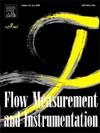Reducing the water hammering, surges, and slamming caused by check valve closure in a wastewater pumping station by using a swing flex check valve
IF 2.3
3区 工程技术
Q2 ENGINEERING, MECHANICAL
引用次数: 0
Abstract
Water hammer is one of the most dangerous phenomena in liquid or liquid/gas systems, because it can cause failure of the system integrity. Sudden valve closure in pipeline systems can cause high pressure that may lead to serious damages. Using an optimal valve closing rule can play an important role in managing extreme pressure in sudden valve closure. Many studies for water hammer concentrated on the main pipeline and pump stopping and important details can be overlooked. Air reduces wave celerity but increasing of surging can occur with some pipework configurations, particularly if air can be trapped, Pump startup can then result in severe water hammer. Selection of a proper check valve for a pumping station is essential to avoid vibration, noise, slamming, and pressure surge problems for the pipeline and pumps. So, in this paper two different check valves were tested for a sewage pumping station: a swing check valve and a swing flex check valve. Pressure measurements were recorded for both cases after a pump trip and resulting check valve closure. Surge analysis using a commercial software (Bentley Water Hammer) was performed. The experimental data was compared for predictions from the model. There is a good agreement between the experimental and predicted data. The results showed that the maximum transient pressure due to the swing flex check valve closure was 33.3 % less than using traditional swing check valve. Accordingly, it is recommended to use this type of valves in sewage water plants because of their high performance during pressure surges. The swing flex chack valve also achieved less slamming during sudden stop pump, so, it can be classified as a non slam check valve.
通过使用摆动式伸缩止回阀,减少污水泵站中由止回阀关闭引起的水锤击、浪涌和砰砰声
水锤是液体或液/气系统中最危险的现象之一,因为它会导致系统完整性的失效。管道系统中的阀门突然关闭会造成高压,从而导致严重的损坏。采用最优的阀门关闭规则可以在控制阀门突然关闭时的极端压力方面发挥重要作用。许多关于水锤的研究都集中在主管道和泵的停止上,而忽略了一些重要的细节。空气降低了波速,但某些管道配置可能会增加浪涌,特别是当空气被截留时,泵启动可能会导致严重的水击。为泵站选择合适的止回阀对于避免管道和泵的振动、噪音、撞击和压力激增问题至关重要。因此,本文对污水泵站的两种不同的止回阀进行了试验:旋启式止回阀和旋启式挠性止回阀。在泵脱扣和导致止回阀关闭后,记录了两种情况下的压力测量。使用商业软件(Bentley Water Hammer)进行浪涌分析。将实验数据与模型的预测结果进行了比较。实验数据与预测数据吻合较好。结果表明,旋启式柔性止回阀关闭时的最大瞬态压力比传统旋启式止回阀关闭时的最大瞬态压力减小33.3%。因此,建议在污水处理厂使用这种类型的阀门,因为它们在压力波动期间具有高性能。摆动式伸缩止回阀在泵突然停止时也实现了较小的冲击,因此可归类为非冲击止回阀。
本文章由计算机程序翻译,如有差异,请以英文原文为准。
求助全文
约1分钟内获得全文
求助全文
来源期刊

Flow Measurement and Instrumentation
工程技术-工程:机械
CiteScore
4.30
自引率
13.60%
发文量
123
审稿时长
6 months
期刊介绍:
Flow Measurement and Instrumentation is dedicated to disseminating the latest research results on all aspects of flow measurement, in both closed conduits and open channels. The design of flow measurement systems involves a wide variety of multidisciplinary activities including modelling the flow sensor, the fluid flow and the sensor/fluid interactions through the use of computation techniques; the development of advanced transducer systems and their associated signal processing and the laboratory and field assessment of the overall system under ideal and disturbed conditions.
FMI is the essential forum for critical information exchange, and contributions are particularly encouraged in the following areas of interest:
Modelling: the application of mathematical and computational modelling to the interaction of fluid dynamics with flowmeters, including flowmeter behaviour, improved flowmeter design and installation problems. Application of CAD/CAE techniques to flowmeter modelling are eligible.
Design and development: the detailed design of the flowmeter head and/or signal processing aspects of novel flowmeters. Emphasis is given to papers identifying new sensor configurations, multisensor flow measurement systems, non-intrusive flow metering techniques and the application of microelectronic techniques in smart or intelligent systems.
Calibration techniques: including descriptions of new or existing calibration facilities and techniques, calibration data from different flowmeter types, and calibration intercomparison data from different laboratories.
Installation effect data: dealing with the effects of non-ideal flow conditions on flowmeters. Papers combining a theoretical understanding of flowmeter behaviour with experimental work are particularly welcome.
 求助内容:
求助内容: 应助结果提醒方式:
应助结果提醒方式:


